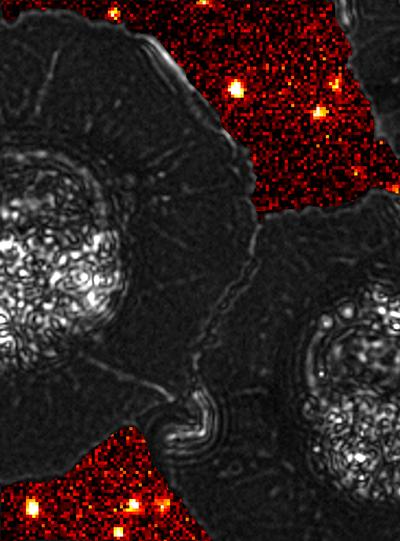Super microscope shows how protein drug interacts with cells

Researchers from the University of Southampton, working with colleagues at the University of Cambridge and Stanford University in the USA. have shown how a new drug therapy interacts with living cells.
The researchers were able to show that the drug – a protein that activates a molecular pathway called the ‘Wnt’ pathway – works by specifically interacting with the membrane ‘skin’ of cells.
The Wnt pathway is found in all animals - from worms to people - and it is very important in disease and the growth of the body. It is involved in controlling the growth of stem cells, which are ‘master cells’ that help restore tissues after injury. One example of this is in amphibians like salamanders. If these animals lose a leg, they can just regrow a new one.
Nick Evans says: “Wnt proteins are quite mysterious, because they can travel around in the body and in between cells, but at the same time they’re not able to dissolve in the watery fluids that surround cells and organs. This means that there must be unknown ways in which they travel around.”
Steven Lee added: “We found by using a special microscopy technique, that Wnt sticks to cell membranes, and wiggles around by diffusion. What was special about this research was that we were able to see and measure tiny, individual proteins. This means that in the future we may be able to give this protein to people by adding in fatty ‘nano’ particles This may help regenerate tissues better, including in bone disease, and speed up bone healing after fracture.”
The research is published in the journal Biophysical Journal.
Links to external websites
The University cannot accept responsibility for external websites.